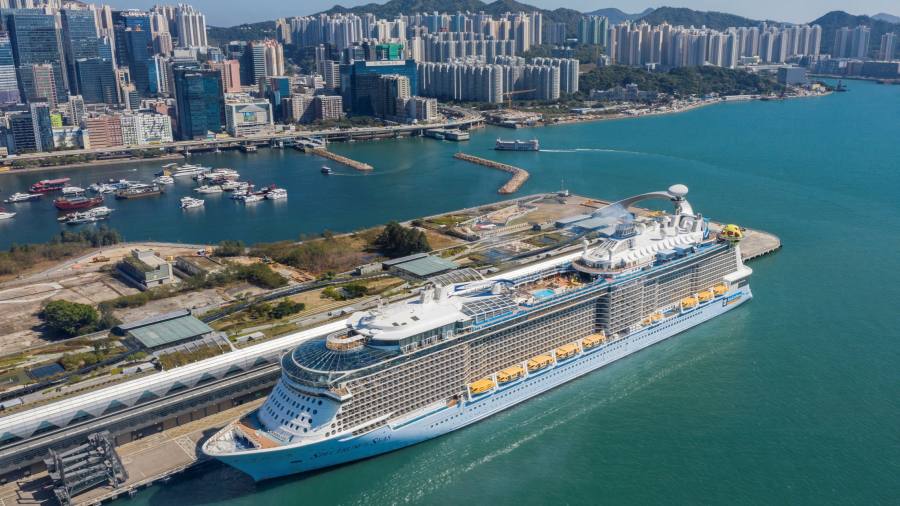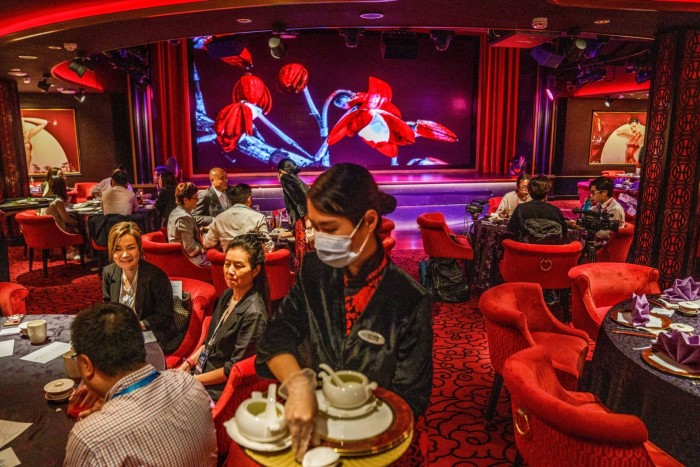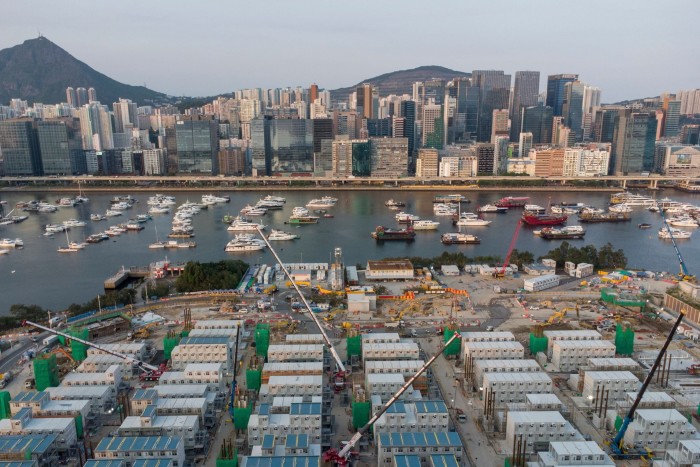
Jessi Chen “had the best time” when she held her bachelorette party with about 50 friends during a “cruise-to-nowhere” trip in Hong Kong a year ago.
“It was really fun,” the business executive, who is in her 30s, told the Financial Times about her trip on Dream Cruises’ 1,674-cabin Genting Dream, a three-day round trip into international waters then back to Hong Kong. It was her first time on a cruise ship in Asia, and she enjoyed it so much that she was looking forward to another trip at a time when international travel was all but impossible because of Covid-19 restrictions.
But then authorities suspended cruises-to-nowhere, too. Hong Kong as well as mainland China, with its commitment to zero-Covid, have been virtually abandoned by international cruise lines and Chen might have to wait months before she can set sail again from Victoria Harbour.
While cruise bookings around the world are rising to pre-pandemic levels, analysts and industry insiders said a recovery for the sector in China and Asia could only begin after 2024, given that liners typically plan operations a year or more ahead.
Carnival’s Costa Cruises, which used to have a strong Asia presence with a quarter of its fleet stationed in the region, has suspended sailings owing to uncertainties over a tourism rebound. Norwegian Cruise Line and MSC Cruises no longer deploy ships in the region, while Genting Hong Kong, which used to operate Dream Cruises, went bankrupt this year.
Royal Caribbean is basing only one of its cruises, the 2,137-cabin Spectrum of the Seas, in Singapore as its home port, as its former port Hong Kong only removed cruise restrictions in October.

The Asia-Pacific region, thanks to a rapidly growing Chinese market, had accounted for up to a fifth of big cruise lines’ global revenues before 2019.
But the pandemic resulted in Asia passenger volumes falling from 3.7mn to 626,000, according to Cruise Lines International Association, an industry body. Passenger volumes in mainland China plummeted 99 per cent to just 6,000 last year, from nearly 2mn in 2019.
Cathy Hsu, a professor at Hong Kong Polytechnic University’s school of hotel and tourism management, said it could take another two to three years for Asia to experience a rebound post-Covid.
“A full recovery to the pre-pandemic level [in Asia] will be challenging without mainland [Chinese] tourists,” said Hsu. “As long as there are policy uncertainties, international cruise lines will most likely stay away from making commitments.”
Hopes of travel relaxations dimmed after China’s Communist party reaffirmed its commitment to its rigid zero-Covid policy last month at its national congress. Hong Kong’s borders are still not fully open, with all inbound travellers barred from restaurants, bars and clubs for the first three days after arrival.
The Chinese territory’s Kai Tak cruise terminal in Kowloon, which used to host the region’s biggest cruise ships, has been turned into a 786-bed government quarantine facility. Jeff Bent, managing director of Worldwide Cruise Terminals, which manages Kai Tak, expected “it would be a few years until we get back to the same breadth of cruise lines that we had in the past”.

Trey Hickey, a former Carnival senior executive, told the Financial Times that most big cruise lines were focused on their core domestic businesses in Europe and the US rather than on emerging markets such as Asia amid the “financial and reputational damage the industry has experienced”.
Cruise lines including Carnival had to refinance large amounts of corporate debt after borrowing heavily amid the pandemic, while the industry suffered damaging publicity when passengers were trapped on Covid-ridden cruise ships in the early days of the outbreak.
But Hickey believes companies that stay engaged with the region could be rewarded.
Silversea Cruises, operated by Royal Caribbean, has planned cruises in Asia that would call at Hong Kong in early 2023, despite not stopping at mainland Chinese ports. Norwegian Cruise Lines has said it would bring back one of its cruises, the Norwegian Jewel, to Asia from October next year.
And Carnival’s joint venture partnership with China State Shipbuilding Corporation, CSSC-Carnival, is set to have its first cruise ship to serve mainland China delivered in 2023.
“The scale and potential of the China market are undiminished” when it eventually opens up to the world, said Brian King, at Texas A&M University. But, he added, “there is a need to rebuild trust and faith”.
According to Chen, the business executive, cruise liners should tap into a younger clientele, who got a taste for life on the seas when all other leisure travel was proscribed.
But Royal Caribbean, which saw its proportion of global revenues from Asia-Pacific fall from about 15 per cent in 2019 to only 9 per cent last year, told the FT it had “no insight on when we will return to service in mainland China”.
“China is the growth engine . . . and is now the only market without a return to service,” the company said. “Hopefully, this will start to change in 2023.”